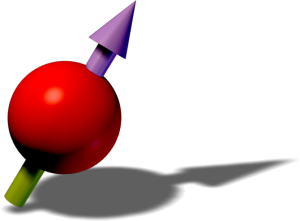by Louis Lafforgue
Abstract:
This thesis describes the work performed during my master thesis in the ERBIUM experiment. The first part explains the steps toward the observation of Bloch oscillations with a dipolar gas of 166Er. We studied Bloch oscillations with ultracold dipolar erbium atoms confined in a one-dimensional lattice. We performed measurement at different scattering lengths, from the contact-dominated regime to the dipolar-dominated one. By combined theoretical and experimental efforts, we emphasize the effect of quantum fluctuations in the dephasing time of Bloch oscillations. In the regime of small meanfield interactions, we observed that the dipole-dipole interactions play an important role in determining the number of occupations of the lattice sites. Special emphasis is given to describe the experimental realization and the method used to analyse the raw data. The second part of this thesis describes, characterizes, and details the implementation of a sub-micron resolution imaging system. Imaging systems are essential components of ultracold gases experiments, and achieving a high-resolution imaging system enables to probe in-situ spatial density distribution. We performed tests on an objective produced by Special Optics. We detail the way to obtain the point-spread function and found an experimental resolution of 0.85(2) µm. We designed a mechanical holder including all degrees of freedom needed to align the objective with the atoms. Finally, we highlight a very flexible optical path using four different optical wavelengths that will enable us to use the objective not merely to image the density distribution but also to apply arbitrary potentials to the atoms.
Reference:
Study of a dipolar gas confined in a one-dimensional lattice and construction of a new imaging setup for the ERBIUM experiment,
Louis Lafforgue,
Master’s Thesis, 2022.
Louis Lafforgue,
Master’s Thesis, 2022.
Bibtex Entry:
@article{LafforgueMSc,
title = {Study of a dipolar gas confined in a one-dimensional lattice and construction of a new imaging setup for the ERBIUM experiment},
author = {Lafforgue, Louis},
journal = {Master's Thesis},
year = {2022},
month = {Jul},
abstract = {This thesis describes the work performed during my master thesis in the ERBIUM experiment.
The first part explains the steps toward the observation of Bloch oscillations
with a dipolar gas of 166Er. We studied Bloch oscillations with ultracold dipolar erbium
atoms confined in a one-dimensional lattice. We performed measurement at different
scattering lengths, from the contact-dominated regime to the dipolar-dominated one.
By combined theoretical and experimental efforts, we emphasize the effect of quantum
fluctuations in the dephasing time of Bloch oscillations. In the regime of small meanfield
interactions, we observed that the dipole-dipole interactions play an important
role in determining the number of occupations of the lattice sites. Special emphasis
is given to describe the experimental realization and the method used to analyse the
raw data. The second part of this thesis describes, characterizes, and details the implementation
of a sub-micron resolution imaging system. Imaging systems are essential components
of ultracold gases experiments, and achieving a high-resolution imaging system enables
to probe in-situ spatial density distribution. We performed tests on an objective
produced by Special Optics. We detail the way to obtain the point-spread function
and found an experimental resolution of 0.85(2) µm. We designed a mechanical holder
including all degrees of freedom needed to align the objective with the atoms. Finally,
we highlight a very flexible optical path using four different optical wavelengths that
will enable us to use the objective not merely to image the density distribution but
also to apply arbitrary potentials to the atoms.},
url = {http://www.erbium.at/FF/wp-content/uploads/2022/11/master_thesis_Louis_Lafforgue.pdf},
}
